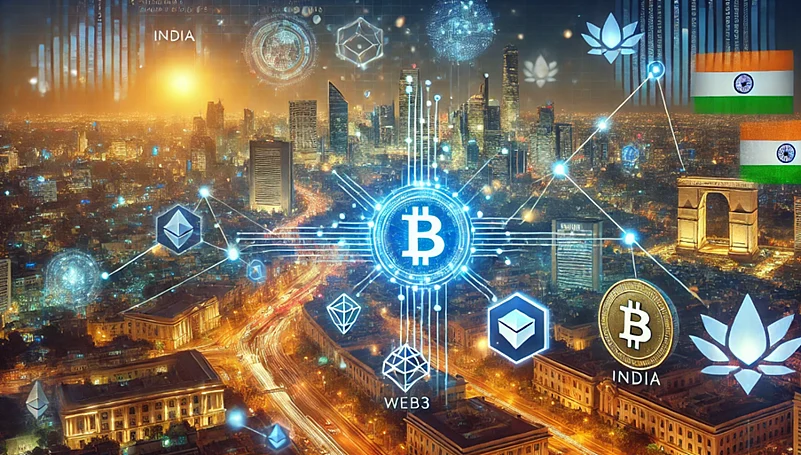India has been pioneering technology revolutions historically. From the IT revolution of the early 2000s to the emergence of digital payments and fintech, India has adopted newer technologies at a very fast pace to spur economic and financial growth and inclusion. Today, as the shift now turns towards decentralization-based technology, India is poised on the cusp of another revolutionary phase centered around cryptocurrency and Web3. This next wave of innovation has the potential to remould industries, empower people, and build a free and transparent digital economy.
Learning About the Transition to Web3
The internet has developed in many forms. Web1 was the age of static web pages with content-only functionality for the user. Web2 introduced social networking websites and e-commerce, but in so doing, it also centralized power in the hands of a few technology pioneers. Web3, founded on blockchain technology, is the future revolution, which seeks to decentralize the internet and provide the user greater control over data, identity, and ownership.
Web3 is based on trustless interactions where people can exchange and communicate without intermediaries. Cryptocurrencies serve as a tool of exchange and facilitate smart contracts, decentralized applications (dApps), and self-sovereign digital identities.
Financial Inclusion and Decentralized Finance (DeFi)
Perhaps the most enticing feature of Web3 and crypto in India is that they both have the possibility of improving financial inclusion. When banking and payment have gone huge, so much of it has passed by all these people remaining outside, regarding entry into bank services. Place-based, the conventional banking framework is costly, regulated, and this makes it so hard for so many Indians to become a part of the economy.
DeFi surpassed these barriers by facilitating financial services beyond the bank. Using blockchain saving, lending, and borrowing protocols, borrowing, gaining interest, and money transfer become a cakewalk. This can become of priceless utility to rural areas, small businesses, and independent workers who otherwise find it difficult to access loans or access foreign markets.
Empowering Creators and Entrepreneurs
India's creator economy is flourishing with millions of software developers, authors, musicians, and artists living off their contributions on the web and being watched by people all across the globe. But within the Web2 economy, intermediaries like social media companies and streaming platforms capture enormous chunks of revenues, leaving creators with no say over what happens to their content.
Web3 brings new paradigms like non-fungible tokens (NFTs) and decentralized content platforms that empower creators to be remunerated directly for their work. With blockchain-enabled ownership, creatives are able to sell their work again directly without agents, at a rightful price for their work. Smart contracts can be used to handle royalty payments, providing creators with a steady source of income when their work is resold.
Transparency and Efficiency in Administration
Apart from finance and virtual assets, crypto and Web3 also have critically important implications for Indian public administration and government. Blockchain can be utilized for increasing transparency in diverse areas, such as supply chains, land records, and elections. Through putting transactions on an unbreakable record, inefficiency and corruption could be prevented.
For instance, title disputes are a common occurrence in India, often resulting in protracted legal proceedings. Land registries with blockchain technology can provide an untampered and secure ownership history, reducing fraud and transferring properties securely. Similarly, blockchain electoral mechanisms can assure clean and democratic elections, advancing democracy.
Challenges and the Road Ahead
While the potential for crypto and Web3 is immense, there are barriers that must be overcome if India is to embark on it at scale. The biggest and the very first is regulatory uncertainty, with policymakers still grappling with how to structure the legal framework around cryptocurrencies and decentralized applications. Security and innovation will have to be balanced when articulating a sound ecosystem.
It is also needed to provide infrastructure upgrades and digital competency for Web3 uptake. Opening up blockchain-powered services to India's urban and rural masses needs to be prioritized the most in order to bring about inclusive growth. This gap can be bridged and the agenda of Web3 for the future for India is spelled out by availing public-private partnerships and learning initiatives.
Conclusion
India can spearhead the Web3 revolution, as it did with IT and digital payments. With decentralized technologies, India can build an open, inclusive, and innovative digital economy. Crypto and Web3 can transform India's digital space through financial enfranchisement, artistic liberty, or open governance. It is not a question of whether India will embrace this revolution, but how quickly and efficiently it will be able to harness its potential for the benefit of society.














